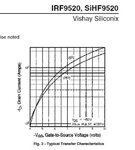boylesg
Advanced Member level 4

- Joined
- Jul 15, 2012
- Messages
- 1,023
- Helped
- 5
- Reputation
- 10
- Reaction score
- 6
- Trophy points
- 1,318
- Location
- Epping, Victoria, Australia
- Activity points
- 11,697
After my bad experiences with the falsely (in my view) quoted maximum voltage for TC4422 I thought I should check that the safe continuous max voltage quoted for FET gates is actually safe?
Or will also more than likely destroy the FET if you try it?
What if I was to apply 17V to a FET gate on a continuous basis? Would I be in safe territory or should I lower the voltage?
Or will also more than likely destroy the FET if you try it?
What if I was to apply 17V to a FET gate on a continuous basis? Would I be in safe territory or should I lower the voltage?


